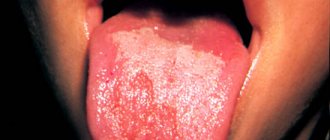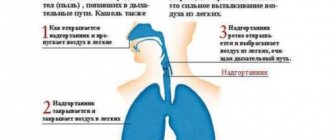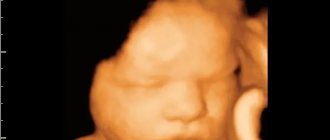The Apgar score is a system for quickly assessing the condition of a newborn child.
In the maternity hospital, the doctor prescribes the Apgar scale along with the baby’s height and weight.
For most mothers, these numbers mean nothing, but they are significant for the infant, pediatrician and visiting nurse.
What is so important about these numbers? Let's figure it out.
Description of the technique
The Apgar score (APGAR) is a table that shows 5 vital signs of a newborn:
- A (appearance) - skin color;
- P (puls) — heart rate (pulse);
- G (grimace) - reflex excitability of the baby (grimaces, sneezing, coughing, screaming);
- A (activity) — muscle tone of the newborn (how active the movements are);
- R (respiration) - nature of breathing (presence and intensity of breathing, strength of cry).
Thanks to this data, medical personnel can quickly determine the need for emergency medical care and the further conditions of the baby’s stay (in the ward with the mother, in the box or intensive care unit).
Reference! Virginia Apgar, an American anesthesiologist and neonatologist, is considered the creator of this method. In 1952, at the 27th Annual Congress of Anesthesiologists, the honorary doctor presented this system and received approval from the medical community.
The method turned out to be simple, convenient and understandable, so it quickly became popular in obstetric practice. Nowadays, the scale is used by hundreds and thousands of doctors in different parts of the world, including in Russia.
Our domestic medicine began to use the Apgar scale back in Soviet times.
Breathing assessment
Possible assessment options and further actions:
- lack of breathing - artificial pulmonary ventilation (ALV) is started. To do this, in the maternity ward, they use the so-called “Ambu bag”: a mask is applied to the baby’s nose and mouth, through which air is forced into the lungs using a rubber bag. If necessary, the child is transferred to the intensive care unit, where they are connected to an artificial respiration apparatus;
- independent but inadequate breathing (convulsive or irregular, superficial) - begin artificial ventilation;
- independent regular - evaluate heart rate.
How are points calculated? Indicators and assessment of the condition of the newborn
Each Apgar score is scored from 0 to 2 .
At the same time, 0 points indicates the complete absence of the attribute,
1 point - the baby was born with a weak expression, and 2 means a strong manifestation of the trait.
The points are added up and the result is a sum from 0 to 10.
Let's look at each indicator on the Apgar scale in detail.
Breathing rate
- According to average statistics, a newborn makes about 40-50 respiratory movements per minute , i.e. The baby inhales and exhales approximately every 1.2 seconds. In addition, the tiny man loudly and sonorously announces his appearance to the world, emitting a ringing cry. In this situation, the baby will receive the maximum 2 points .
- If the baby’s cry resembles a weak and superficial groan, and breathing is slow or irregular , then such a toddler will be assessed by the doctor as 1 point .
- Lack of breathing and screaming equals 0.
Heart rate
- When assessing this indicator, the pediatrician listens to the newborn's heartbeat. A baby's heart beats up to 140 beats per minute , so a pulse of more than 100 beats is considered normal and is estimated at 2 points .
- Heartbeat less than 100 - 1 point .
- Single beats or complete absence of pulse - 0 points.
Muscle tone
- All newborn children have increased muscle tone , it is because of this that, after birth, babies are in a position reminiscent of an embryo: the chin is tilted towards the chest, the arms are bent at the elbows, and the legs are tucked and bent at the knees and hip joints. Palms clenched into fists. The baby's movements are excessive and somewhat chaotic. Normally, he makes short but frequent swings of his arms and twitches his legs. In this case, the baby gets 2 points .
- If the movements are rare, sluggish, and the arms and legs are slightly bent, then there will be 1 point .
Note! It is worth noting that weak muscle tone is not an indicator of some serious illness; the indicator can return to normal in the shortest possible time.
- Weak movements or their complete absence equals 0.
Reflexes
- Another important indicator of the viability of a newborn. The reflexes of newborns “force” the baby to make the first cry and breath, and later allow the baby to be saturated with mother’s milk (sucking reflex). If congenital reflexes are fully manifested, the pediatrician will give the highest score - 2.
- If reflex excitability manifests itself uncertainly, weakly, or sporadically, then the infant will receive 1 point.
- And with a complete absence of reflexes - 0 points.
Color of the skin
- The baby's skin ranges from pale pink to bright pink, this is considered normal . Babies with such blush will receive 2 points. In a newborn with a different skin color (for example, Negroid or Mongoloid race), the whites of the eyes, lips are examined, the color of the mucous membranes of the oral cavity, the lower surfaces of the palms, feet are examined, and a score is assigned based on the results obtained.
- If the baby has cyanosis of the limbs, face or skin closer to red , then 1 point .
- The whole body is uniformly bluish or pale, the baby receives 0 points .
Newborn baby skin color
What kind of skin should a newborn baby have normally? At birth, in the first hours of life, the epidermis may be dark - with a bluish or purple tint. This feature is explained by the still weak blood circulation. Subsequently, hemoglobin in the blood rises, the baby’s skin brightens and acquires a red tint. After 2-3 days, the redness goes away, the skin color changes again and may acquire a yellow tint. A baby's normal pink or white skin color appears by the end of the first week of life.
Now let's look at the typical skin problems that parents face.
What is considered normal?
Knowing the assessed indicators, you can calculate the newborn’s scores and find out his condition. All that remains is to figure out what number of points is considered the norm? And do the numbers differ for natural childbirth, cesarean section and in cases of premature babies?
Natural birth
In the Russian Federation, indicators in the range from 7/7 to 10 points .
After cesarean
After a cesarean section (an operation in which the newborn is removed through an incision in the uterus), the norm is considered to be 7/8, 8/8, 8/9, 9/9, 9/10, 10 .
For premature babies
The scale for premature babies ranges from 6/7 to the cherished 10 .
The medical community agrees that, given the same pregnancy conditions, newborns born by cesarean section may have a slightly higher score.
This is due to the fact that they did not have to endure the stress associated with passing through the birth canal.
However, there is no significant gap between the indicators in infants born naturally and through cesarean section.
The norm for immature newborns, as can be seen from the figures, is slightly lower than for full-term infants. In this case, 6/7 is an acceptable result . The child, of course, needs constant monitoring and care, but his life and health are not in danger. Although, abroad, the numbers 6/6 and even 5/6 are considered the norm for premature babies. European doctors are more loyal to Apgar scores.
Important! Complications during the birth process, such as prolonged or premature labor, presentation, acute hypoxia or asphyxia in the fetus can negatively affect the indicators.
Why is the Apgar score needed?
Anesthesiologist Virginia Apgar from America suggested giving newborns scores. And this assessment system has been successfully operating since 1952. The scale was “conceived” as an aid to nurses and midwives - by assessing the condition of children according to five indicators, they could understand which of them needed more attention. Later, testing on the Apgar scale began to be included in the list of mandatory medical procedures that are carried out with a newborn. And as doctors say, she saved many lives.
The Apgar scale, if you check medical terminology, is a system for assessing the condition of a newborn in order to identify the need for certain resuscitation procedures.
Explanation in the table. What do the following scores mean?
| 10 points | The maximum number of points is considered the best performance. Abroad, doctors are not “greedy” and often give the coveted 10. Russian doctors extremely rarely give the highest score, since the evaluation system is very subjective. A newborn baby is still poorly adapted to the harsh conditions of our world. His health is like a glass ball that is easy to break and impossible to repair. The baby has experienced severe stress (passage through the birth canal, changes in temperature, pressure, etc.), he breathes independently, sucks the breast, and feels discomfort when his skin comes into contact with foreign objects. Therefore, in domestic medicine, they often “play it safe” and give a score just below 10, even to the most rosy-cheeked and robust little one. |
Reference! Children who do not achieve the maximum score are re-tested 5 minutes after birth. Their cards contain 2 numbers separated by a slash (slash), for example ¾, 5/6 or 7/7. If the second score is higher than the first (for example, 4/5), then positive dynamics are observed, but if the numbers are the same (3/3), then the baby’s condition remains unchanged.
| 9/10, 9/9, 8/9, 8/8, 7/8, 7/7 | Optimal assessment of the infant. These numbers indicate the good health of the newborn and that the period of early adaptation of the baby is going well. Such infants do not need constant medical supervision. staff, they need decent care, love and attention from their mother. |
| from 6/7 to 5/5 | The baby's health is assessed as satisfactory. In other words, there are deviations from the norm, for example, the newborn is blue or the first cry was weak. In such cases, clearing of the airways and observation by medical staff during the postpartum period may be required. Parents of such babies should not be upset or panic, because, with proper care, the child’s body will quickly recover and get closer to normal. |
| 4/5, 4/4, ¾, 3/3 | The condition assessment is below average, i.e. several indicators on the Apgar scale were weak or completely absent. Such results are considered unsatisfactory. This little one needs urgent medical attention. Usually, with such figures, the newborn is assessed several times (5, 10, 15 minutes after birth, and sometimes even after 20). Based on the obtained coefficient, the council of doctors decides what measures are necessary to improve the baby’s condition - carrying out resuscitation measures and other medical procedures. |
It is worth saying that these numbers are usually found in the cards of premature babies. Such babies may have weak lungs, poorly developed reflexes, or extremely low weight; their body is not strong and is not ready for such a stressful situation.
Attention! Newborns with numbers 3-4 need close medical supervision, not only in the first days of life, but also in the following weeks after birth (most often 1-2 weeks, in rare cases patronage is extended for another 1 week). During this period of time, the physical condition of the newborn is assessed, and a number of tests and procedures are performed.
| 2/3, 2/2, ½, 1/1, 0/2 and 0/1 | Critical numbers. The newborn's life is in danger and he needs urgent resuscitation care. Vital signs are extremely low, in such cases, every minute of delay can cost the baby his life. Typically, the medical team will immediately begin resuscitation efforts. With these indicators, the condition of the newborn is assessed at 1 and 5 minutes. |
Many doctors note that after 5 minutes the baby’s heartbeat quickens, breathing normalizes, and the skin acquires a normal color. Children are becoming more active. Reflexes and reactions to stimuli improve. But, despite the progress, such infants constantly need medical care and, especially in the first days, close attention.
In the future, such a baby needs a comprehensive, detailed examination and careful monitoring by specialists (neurologist, surgeon, etc.) over time, since the likelihood of complications is high.
Consequences of low performance
Low indicators indicate a significant deviation from the norm and poor adaptation of the baby to the external environment.
Such numbers could provoke:
- asphyxia (suffocation);
- acute or chronic hypoxia (lack of oxygen);
- prematurity (baby born before the 37th week of pregnancy, weighing less than 2.5 kg);
- consequence of birth trauma (damage to soft tissue, skeletal system or internal organs);
- intrauterine infection (pathological processes and diseases caused by infection of the fetus);
- incompatibility of maternal blood and fetus (Rh conflict).
Doctors say that oxygen starvation causes severe harm to the baby, i.e. asphyxia and hypoxia. In this case, newborns are cyanotic, their cry resembles a groan. In extremely severe cases, there is no cry at all. The baby is lethargic or without movement.
What is the danger? A prolonged lack of the required amount of oxygen can cause disruption in the baby’s development in the future and provoke neurological diseases:
- syndrome of increased reflex and nervous excitability;
- convulsive syndrome;
- epilepsy;
- hydrocephalus (water on the brain).
The baby will be whiny and restless. There may be a lack of appetite, lethargy, or, conversely, excessive excitability.
Such violations require observation by specialists and timely adoption of measures, such as drug treatment.
Birth trauma can cause:
- cerebral palsy (CP);
- vegetative-vascular dystonia (VSD);
- hypertension;
- motor impairment.
Children with such disorders, as in the previous case, are restless and whiny. They need competent care and qualified medical assistance.
The consequences of intrauterine infection are quite unpredictable. There may be problems with hearing, various diseases of internal organs, and, unfortunately, stillbirth. Here, too, one cannot do without specialists.










